On September 20, 1808, the President sent this to the inhabitants of Kingston in response to their earlier petition about the Embargo Act of 1807. As form letters go, this is a good one.
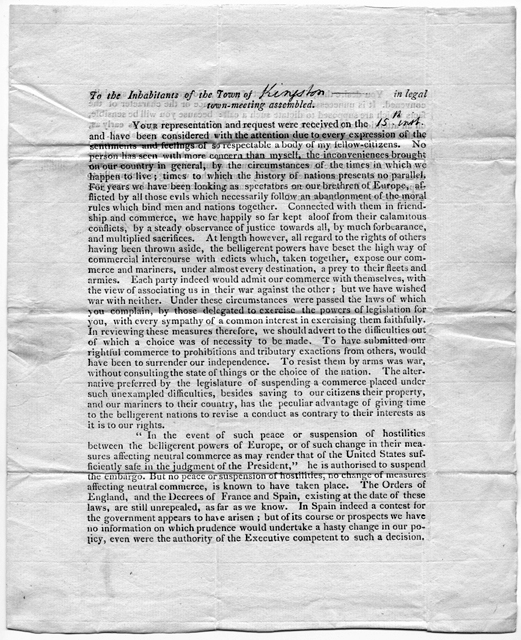
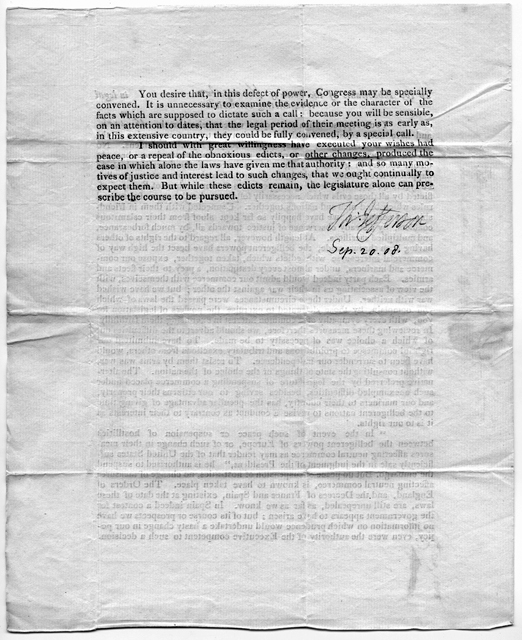
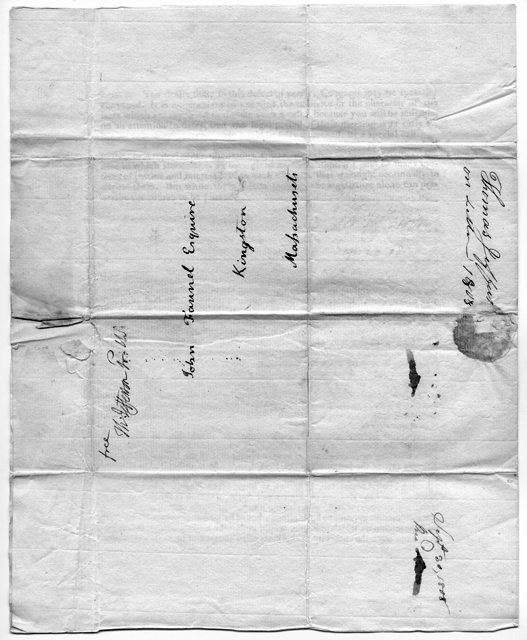
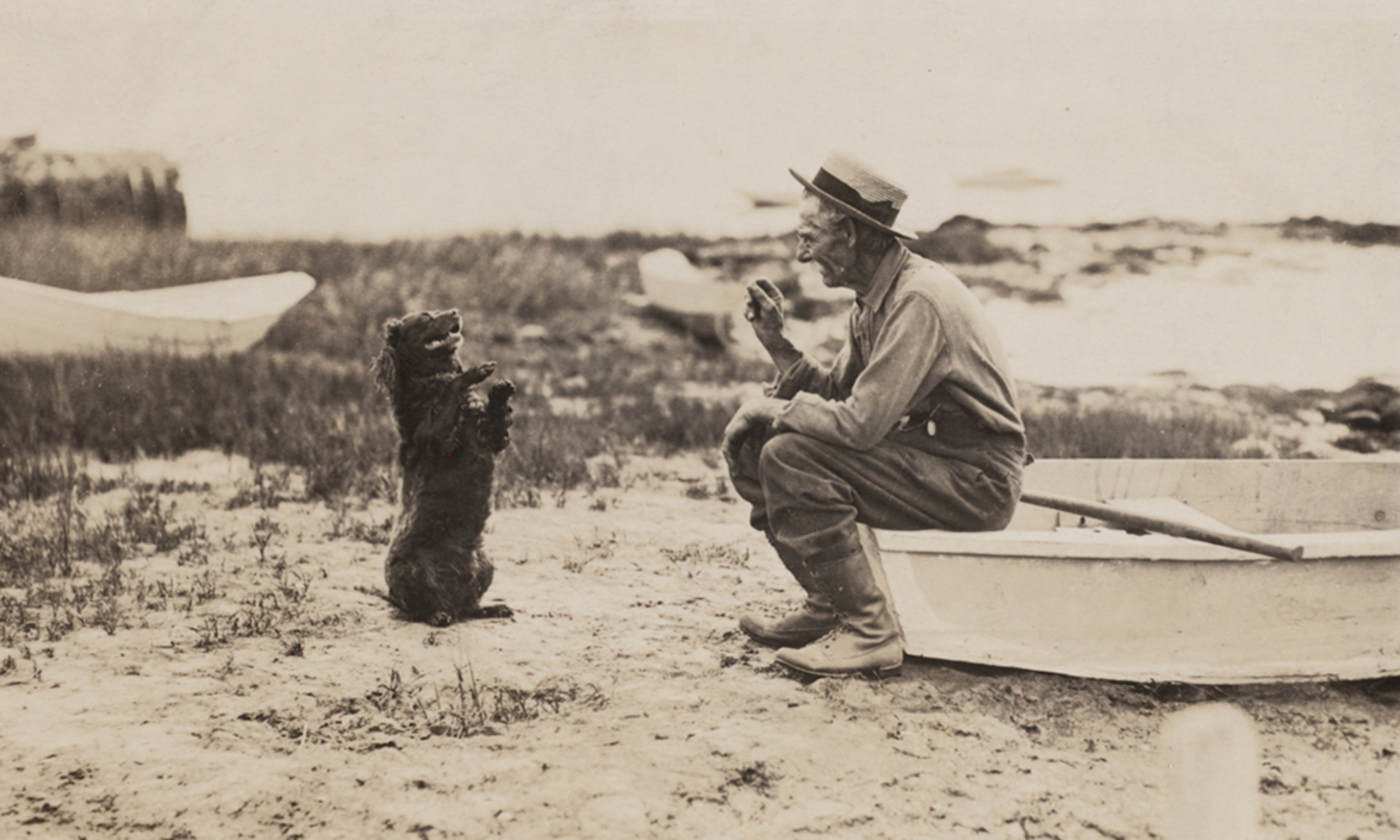
Kingston (Massachusetts) Public Library
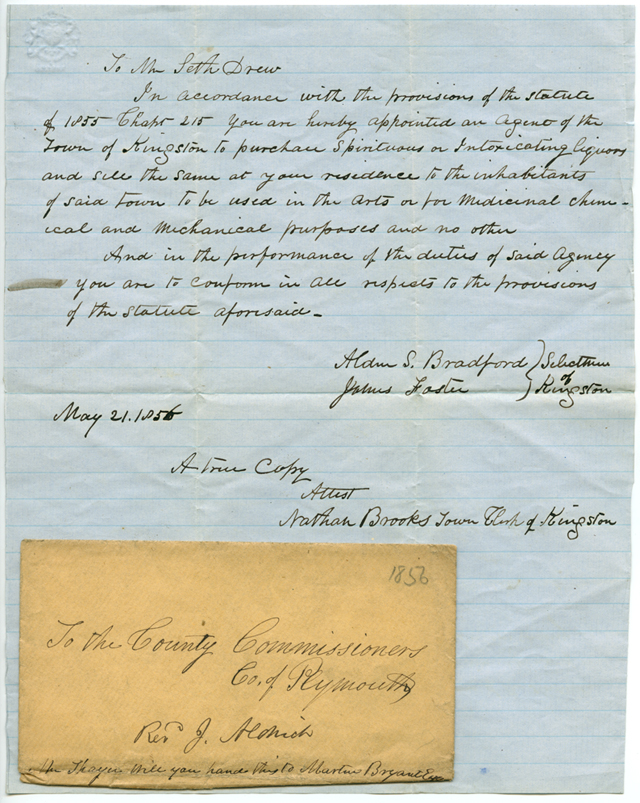
To Mr. Seth Drew
In accordance with the provisions of the statues of 1855 Chap. 215 you are hereby appointed an Agent of the Town of Kingston to purchase Spiritous or Intoxicating liquors and sell the same at your residence to the inhabitants of said town to be used in the Arts or for Medicinal chemical and Mechanical purposes and no other.
And in the performance of the duties of said Agency you are to conform in All respects to the provisions of the statute aforesaid.
Alden S. Bradford, James Foster, Selectmen of Kingston
May 21, 1856
A true Copy Attest, Nathan Brooks Town Clerk of Kingston.
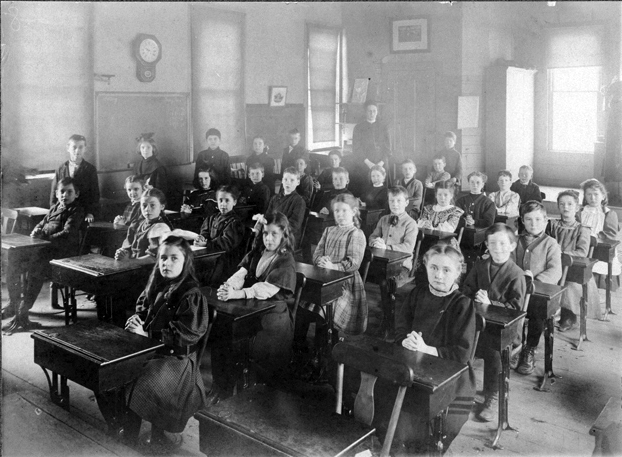
Captioned by the teacher’s grand-niece, this photograph shows the seventh and eight grades at the Center Primary. This school house is now known as the Faunce School. For another class photo, see here.
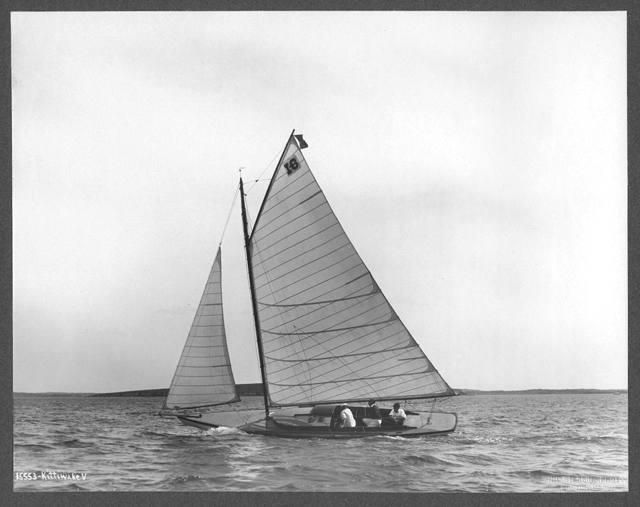
Kingston’s storied history of building ocean-going sailing vessels stretches from about 1713, when shipwright Samuel Drew and his son Cornelius set up shop on the Jones River, until 1874, when Edward Holmes launched the brig Helen A. Holmes, or perhaps until 1898 when Edward Ransom built only Kingston’s only steamer, the Tiger. As the era of great sailing ships passed away, for a short time Kingston ruled the yachting world.
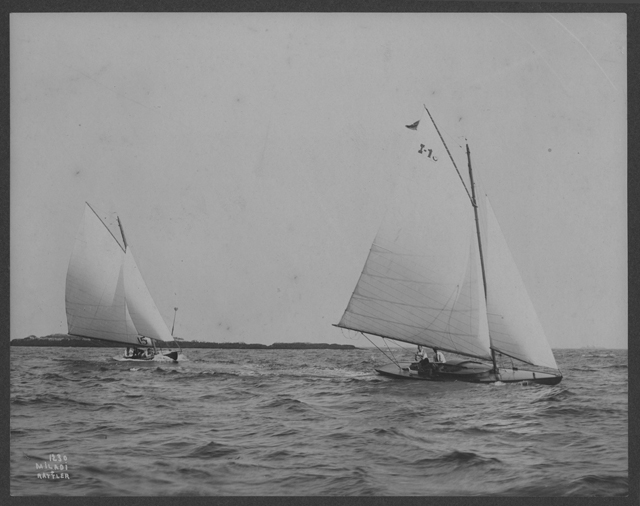
This month’s exhibit highlights some of the knockabouts, catboats and spritsails built in Kingston and raced in local waters by members of the Kingston Yacht Club, whose annual regatta is this weekend.
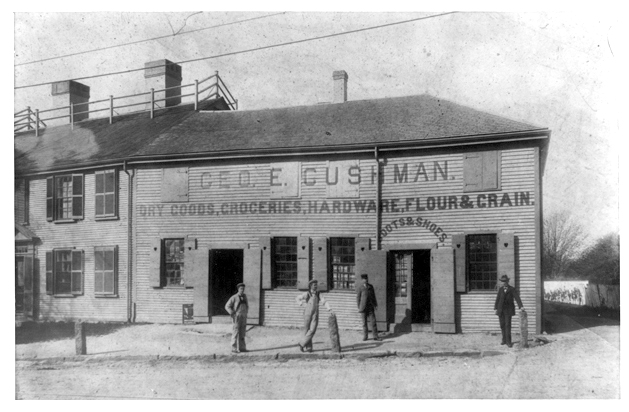
The house at 196 Main Street, partially visible on the left in the photo above, stands on land purchased in 1785 by David Beal, and was probably built around then. The store wing was added in 1794. Beal’s son, David Jr., then his son-in-law Horace Collamore ran the store until Henry Hunt and his son-in-law Azel Sampson bought the store and house. George E. Cushman started as Sampson’s assistant but eventually took over. He ran the store in this annex until it was demolished by Mrs. Sampson in 1902. Cushman’s horse-drawn delivery wagons were featured in an earlier post.
Here’s the inside, and a word or two from Emily Drew:
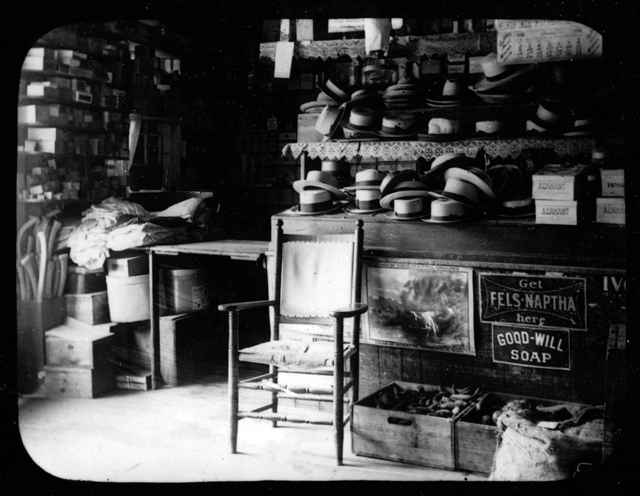
[The lantern slide above] shows the “hat shop”, medicine drawers, “office” niche and way into the Sampson house where shoes were on sale. A door opened from this (south) end of the main store into the shoe store, the north front rooms of Mrs. Sampson’s house.
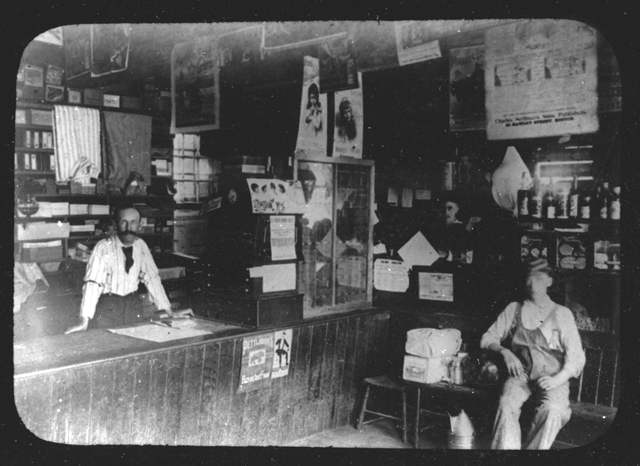
Perhaps more varied in goods offered for sale in country stores but typical of the sort of store, the forerunner of our modern department stores. Shown left to right: George E. Cushman, owner and proprietor; in background, Ezra S. Wright, clerk; on settee John Mange, helper and store-boy, who lived at #39 [Main St.]. Between Mr. Cushman and Mr. Wright is the Post-office with its boxes into which mail for the neighborhood was distributed. When the government office was moved to Stony Brook, Mr. Cushman, at the request of the neighborhood, maintained a branch office.
Sources: Emily Drew’s card file; Major Bradford’s Town by Doris Johnson Melville (Town of Kingston: 1976).
For more about Old Colony Railroad, check out the Local History Room’s exhibit case.
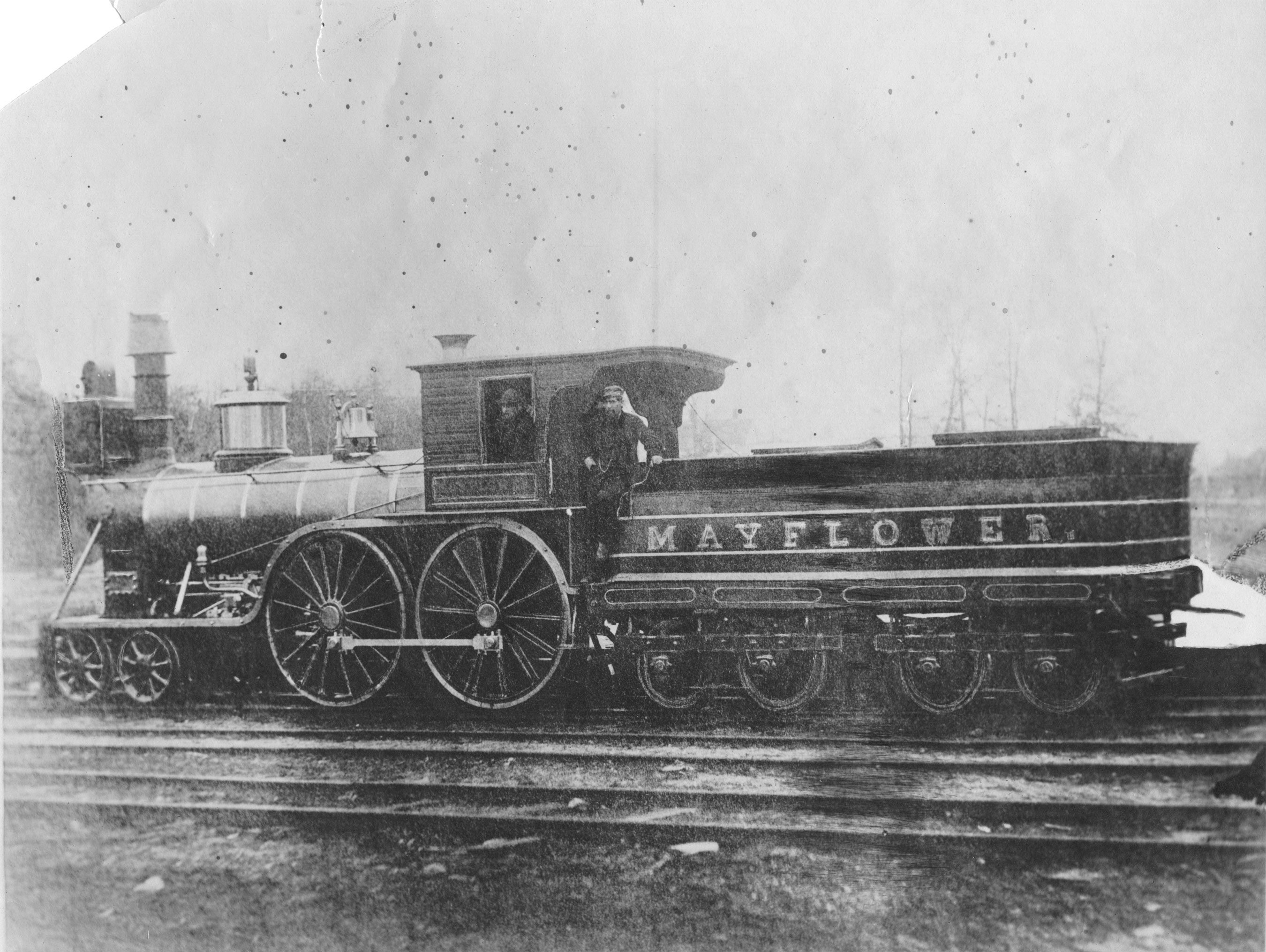
At one of their earliest meetings, the Directors of the Old Colony Railroad voted to give the engines historical names related to Plymouth. The “Mayflower” along with the “Miles Standish” pulled the very first trainload of dignitaries officials on the railroad’s inaugural excursion on November 8, 1845.
The purple trains that stop in Kingston along the Old Colony line to connect commuters to the larger regional rail system have a long and interesting history.
The Massachusetts Legislature chartered the Old Colony Railroad on March 16, 1844. John Sever of Kingston was elected the new company’s first President. Just a year and a half later, on November 8, 1845, the first ceremonial train loaded with company officials and invited dignitaries traveled the 37 miles from South Boston to Plymouth. And over the next 50 years, the Old Colony line expanded to cover much of eastern Massachusetts by building branch lines, leasing existing routes and merging with other railroads.
For example, in 1854, the Old Colony consolidated with the Fall River Railroad.
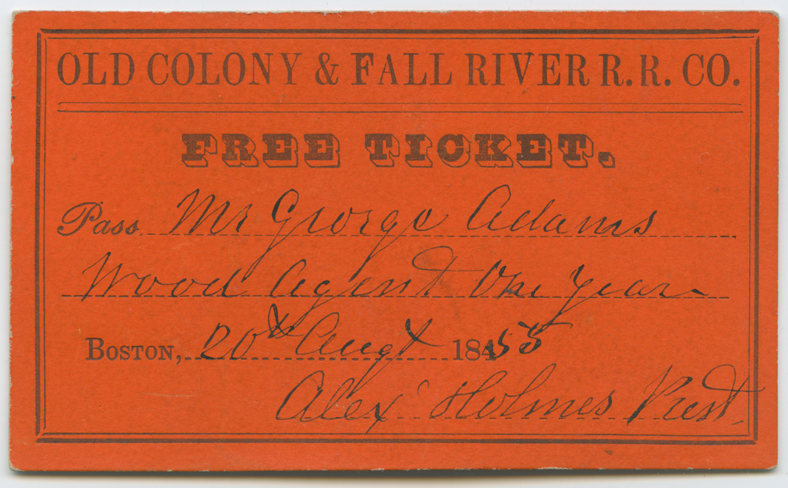
In 1855, the President of the Old Colony & Fall River Railroad Company, Kingstonian Alexander Holmes, issued this pass to his “Wood Agent” and fellow Kingstonian George Adams. Mr. Holmes had secured the services of Mr. Adams in May of 1850, and charged the company $20 for doing so as his debit account shows.
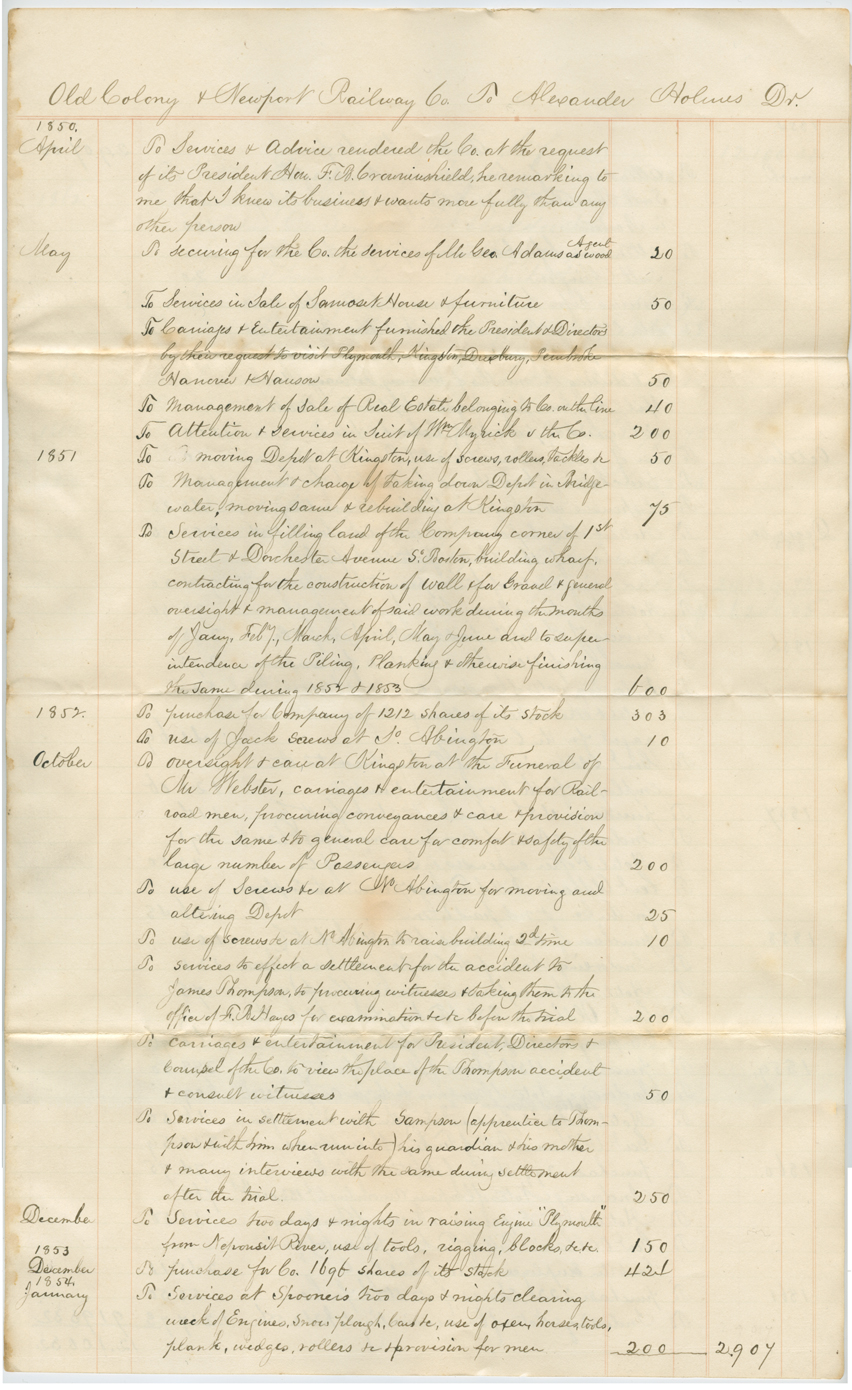
The Old Colony & Fall River had become the Old Colony & Newport in 1866 (the full accounting extends to that year, the last of Mr. Holmes presidency). The company reverted to its original corporate name in 1872 after absorbing the Cape Cod Railroad. By 1892, the Old Colony Railroad stretched from Provincetown to Providence, west to Worcester, north to Fitchburg, over to Lowell and back down to Boston.
Kingston’s “local” line exemplifies the growth and consolidation of the railroad industry through the 19th century. Small lines incorporated, then grew and combined into ever-larger conglomerates. In 1893, the Old Colony’s Providence Division caught the eye of the mighty New York, New Haven & Hartford Railroad — known as the New Haven — as a direct connection to Boston. Rather than lease this important component to its larger neighbor, the Old Colony leased itself as a whole and was subsumed. The New Haven continued to expand, eventually taking over not only most of the railroads in the northeast, but trolley lines and steamships as well
In 1935, decades of aggressive purchases and accumulated debt lead the New Haven to bankruptcy (for the first time).
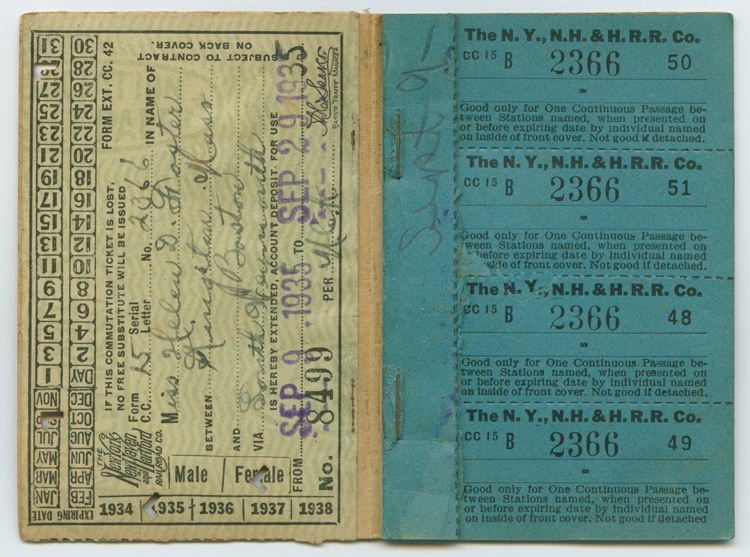
The Old Colony line still carried passengers, as shown by Kingstonian Helen Foster’s ticket book. The commercial artist commuted to her studio on Park Street in Boston by train until 1946, when she shifted her workplace back to Kingston. In 1947, the New Haven emerged from receivership. Despite some success in the early 1950s, overwhelming debt combined with the growing interstate system led the New Haven to discontinue service on the Old Colony line in 1959. The New Haven limped on to 1961, when it declared bankruptcy again; in 1969 it became part of the gargantuan Penn Central, which itself failed three years later, marking the final collapse of the railroad behemoths that had dominated the country for a century.
In Massachusetts, regionalism saved the rails. In 1964 the MBTA was formed and the next year, it laid claim to the New Haven’s tracks in and around Boston. Over the next four decades, purple trains began to appear along the commuter rail system. In 1997, the Old Colony line once again ran through Kingston.
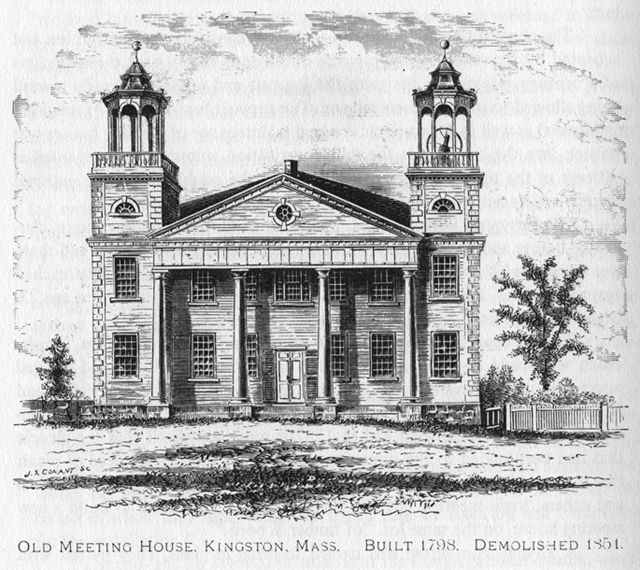
This is the Second Meeting House, which stood where the First Parish Church now stands on Main Street, next to the Training Green. It served not only as the second building to house the First Parish, but also as the center of Kingston’s town government before the original Town House was built. We know a few things about it. There is the drawing above. There are written descriptions. Doris Johnson, in Major Bradford’s Town, gives the specifics of the 1798 “plans for a structure 60 feet by 55 feet and 25 feet high, with ‘projectments to be 10 feet added’.” Further, she quotes Sarah Bailey in Civic Progress.
This was the large meeting house with the two belfries known to this generation only by pictures…It was unique in its exterior form, but inside it was a typical New England meeting house with high pulpit and sounding board, galleries on three sides, and square pews with doors and the seats that were raised while the congregation stood during the long prayer.
Mrs. Bailey’s generation may have known the Second Meeting House by pictures, but viewers in this century knew only the one drawing and the words.
Until last week…
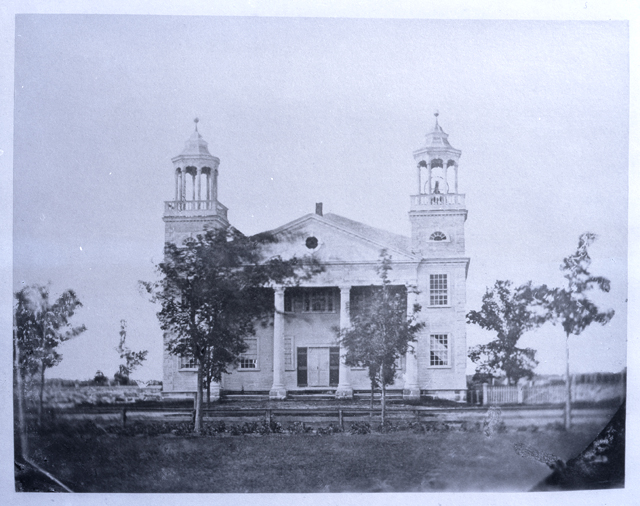
Part of a large new collection, the heavy celluloid negative from which this scan was made is a copy because film negatives did not appear until the 1880s, but the building was demolished in 1851. This image might even have been made before 1841, when the Old Town House was built: it would have stood to the right and behind the Second Meeting House in this view. That may be the sum of what we will ever know about this negative. Still for all the questions and all the unknowns, we now have a photograph that once disappeared into history, but has now emerged.
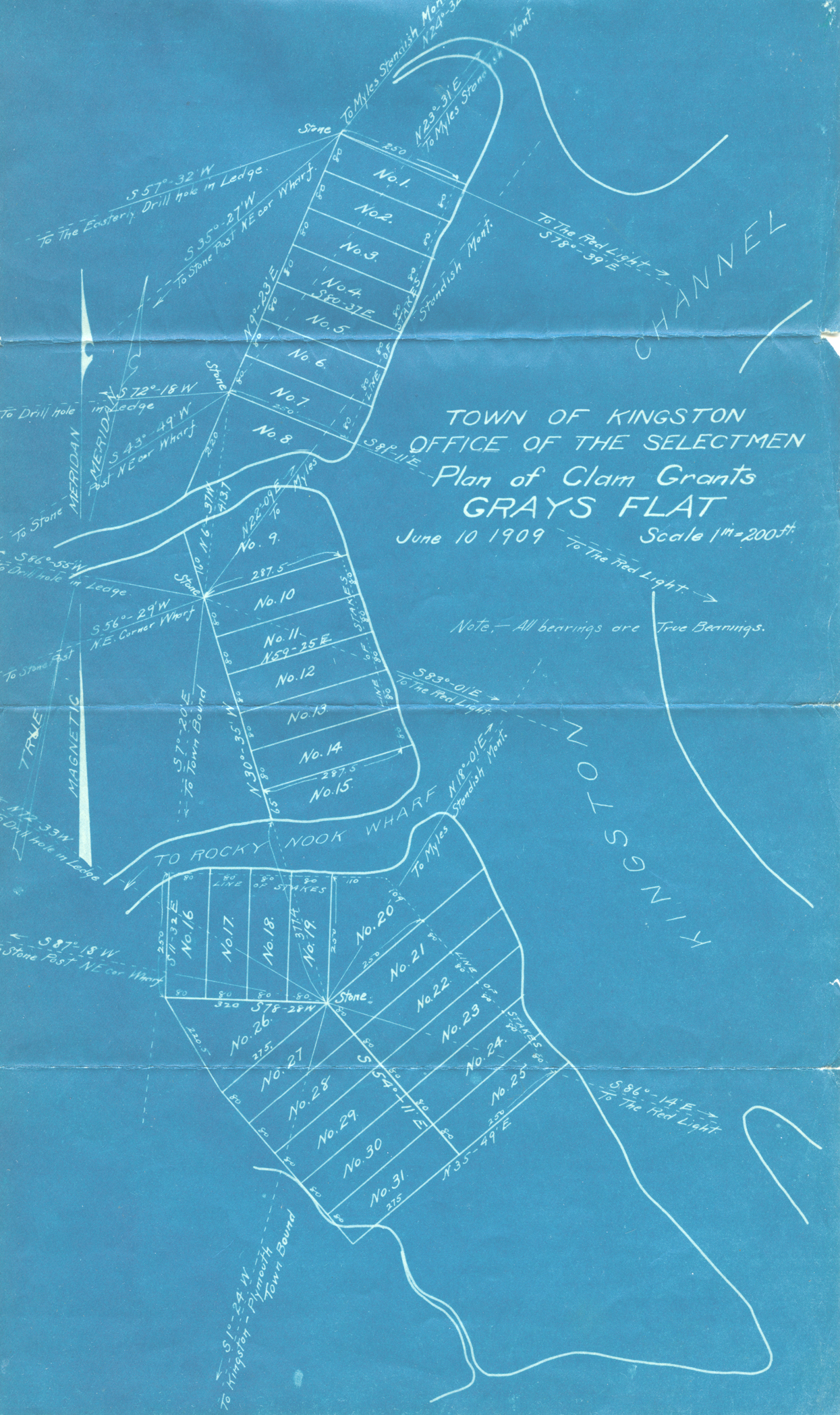
Throughout the 1800s, Kingston, along with Plymouth and Duxbury, provided clams to cod fisheries all along the Massachusetts coast. Clams were sold fresh for bait in the winter months, or steamed, salted and barreled for summer use. The region produced as much as 100,000 bushels a year. Around 1875, the shellfish – steamed and fried – became a sought-after delicacy, not only for New England clam bakes and shore dinners, but also in fancy restaurants in Boston, New York and Chicago for restaurants. Closer to home, shellfish
With Chapter 195 of the Acts of 1870, Massachusetts allowed towns to regulate shellfishing. In 1909, licenses to culture and harvest clams were issued by the Selectmen of Kingston, and the Bay floor was divided among the lucky license holders. The first license was issued to Fred Bailey for “one-half acre more or less.” The division of Gray’s Flats can be seen on the blueprint above.
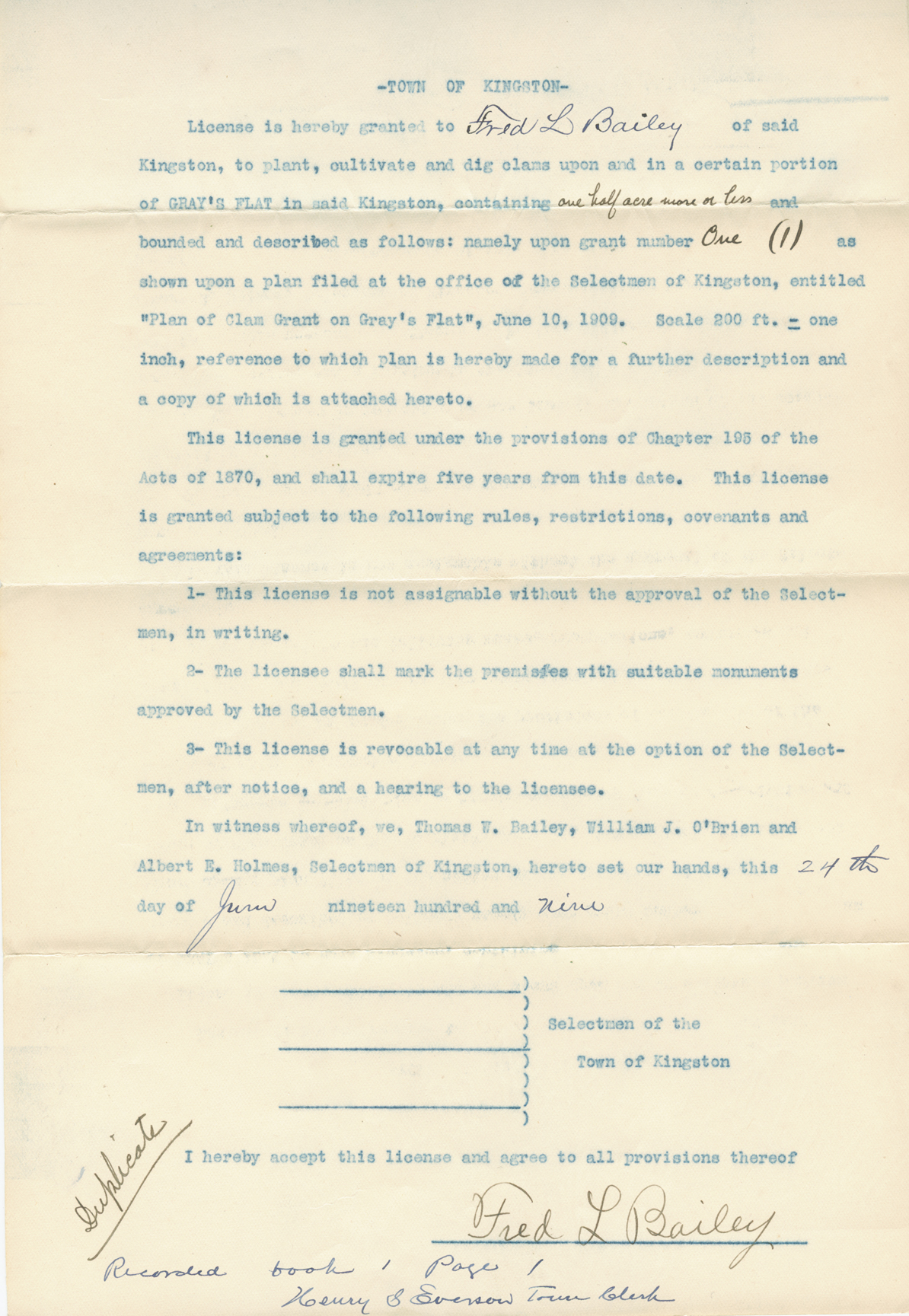
During the 1920s, outbreaks of typhoid fever were traced back to local shellfish and many beds were closed. Some Kingston clam flats have remained closed since that time, while other areas were harvested into the 1970s. As the towns around Kingston, Duxbury and Plymouth Bays grew, pollutants increasingly affected the ecosystem, and shellfishing became hazardous. By 2002, however, efforts to decrease storm drain runoff and regulate septic systems had lowered pollution levels enough to allow Kingston Bay to be seeded with seven tons of cherrystones, quahogs, little necks and soft shell clams. In 2009, Kingston were again issued shellfish licenses, almost 100 years to the day after the original licenses were granted. Aquaculture is a new, and newly revived, industry in Kingston and surrounding towns.